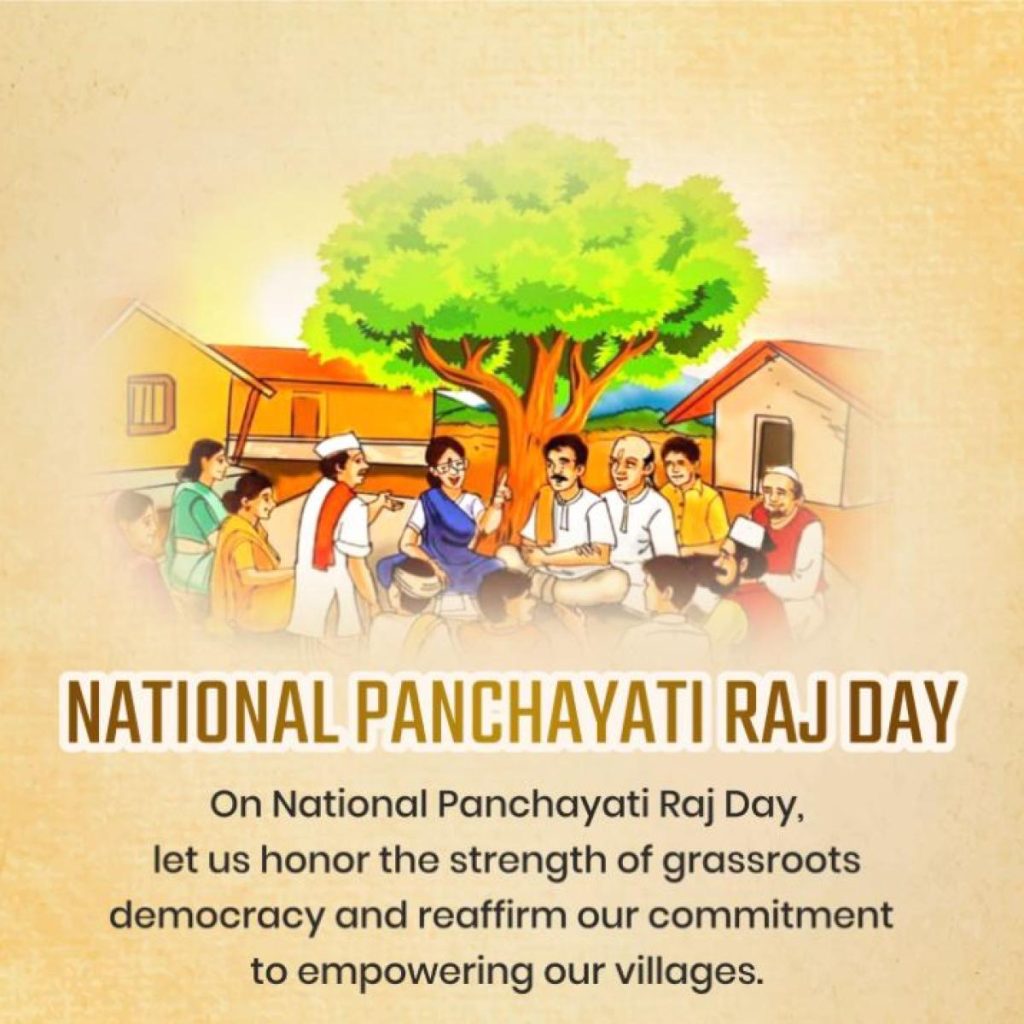Context:
India celebrates National Panchayati Raj Day every year on 24 April to honour the establishment of the Panchayati Raj System.
More on news

- This year (2024) marks the 31st anniversary of National Panchayati Raj Day.
- In 2024, there won’t be a particular theme for the National Panchayati Raj Day in India, as the Ministry of Panchayati Raj will host a national colloquium on ‘Governance at the Grassroots after Three Decades of the 73rd Constitutional Amendment’ at Vigyan Bhawan in New Delhi to mark the celebration of the day.
- On this Day, the government recognises the best-performing Panchayats across India for their outstanding efforts to improve the lives of rural households
About Panchayati Raj System (PRI)
- PRI is a system of rural local self-government in India
- By the 73rd Constitutional Amendment Act of 1992, which came into effect on April 24, 1993, gave constitutional status to PRI.
- It added a new Part IX to the constitution titled “The Panchayats” covering provisions from Articles 243 to 243(O) and a new Eleventh Schedule covering 29 subjects within the functions of the Panchayats.
- Article 40 of the Indian constitution: the State shall take steps to organise village panchayats and endow them with such powers and authority as may be necessary to enable them to function as units of self-government.
- The Ministry of Panchayati Raj created in May 2004 is a branch of the Government of India looking after the ongoing process of decentralisation and local governance in the States.
Historical background
- Mayo’s resolution of 1870 impeded local institutions’ development by enlarging their powers and responsibilities.
- In 1882, Lord Ripon introduced an important Local Self–Government Resolution.
- It provided for local boards consisting of a large majority of elected non-official members and presided over by a non-official chairperson, considered to be the “Magna–Carta” of local democracy in India.
Post-Independence Period:
- In 1957, the National Development Council constituted a committee headed by Balwant Rai Mehta to look into the working of community development programs.
- The committee suggested three-tier PRIs, Grama Panchayats (GPs) at the village level, Panchayat Samiti (PSs) at the block level, and Zilla Parishad (ZPs) at the district level.
- Consequently, Bagdari Village, Nagaur District became the first village where Gram Panchayat was established, on 2 October 1959.
- Ashok Mehta Committee in 1977: recommended a two-tier Panchayat Raj institutional.
- Other important committees are the Hanumantha Rao Committee (1983), G.V.K. Rao Committee (1985), L.M.Singhvi Committee (1986) and the Sarkaria Commission on Centre-State Relations (1988), P.K. Thungan Committee (1989).
Significance of National Panchayati Raj Day
- Effective local administration is necessary for India to achieve inclusive growth and address problems like climate change and rural-urban migration.
- PRIs are in a good position to ensure fair and sustainable development at the local level and respond to local demands.
- The Panchayat Raj system helped uplift the people in rural areas by providing them a space to voice their opinions and be a part of development and empowerment.

